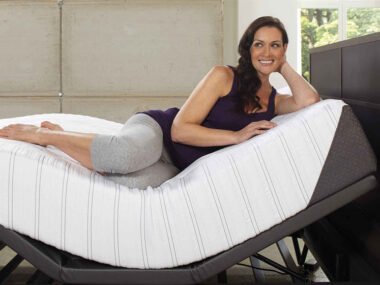Moving day arrives, and you’re staring at your beloved sectional sofa, wondering how on earth it’s going to make it down three flights of stairs. If you’re like most people, you probably didn’t think about furniture disassembly until this moment. The truth is, furniture disassembly isn’t just a convenience – it’s often a necessity that can make the difference between a smooth move and a costly disaster.
Most people learn this lesson the hard way, usually while watching furniture movers struggle to angle a king-size bed frame through a narrow hallway, or hearing that dreaded scraping sound as their dining table gets wedged in the elevator. Proper disassembly protects both your furniture and your new home’s walls, doors, and floors. It also significantly reduces the risk of injury to everyone involved in the move.
Who’s Responsible for Furniture Disassembly?
The Moving Company Conundrum
Here’s where things get interesting – and potentially expensive. Moving companies offer widely varying levels of service when it comes to furniture disassembly. Full-service movers typically include basic disassembly in their quote, but their definition of “basic” might surprise you. What seems basic to you (like taking apart a four-piece sectional) might be considered a complex job by your movers, complete with hefty additional fees.
Many customers assume their movers will handle all furniture disassembly, only to discover on moving day that they’re only willing to tackle simple bed frames and dining tables. More complex items often require additional fees and special handling or may be refused entirely. The key is understanding exactly what your movers will and won’t do before they arrive and using local movers with FindaMover will have all their services laid out.
The DIY Approach
Taking apart furniture yourself can save money, but it’s not always as straightforward as it seems. While basic items like IKEA furniture are designed for relatively easy disassembly, other pieces can be deceptively complex. That seemingly simple desk might have hidden fasteners or require special tools. The success of DIY disassembly often comes down to preparation and documentation – taking photos before you start and keeping track of every screw and bolt removed.
When to Call in the Specialists
Sometimes, neither you nor your movers are the best choice for furniture disassembly. Professional moving specialists exist for a reason, what if you’ve got a marble stone dining table that was put together by a professional stone mason, or a passion motorcycle project where the not-yet-running motorbike needs a professional motorcycle transporter to diligently tie down separate parts and have it transported. Or, particularly when dealing with antiques, built-in units, or high-end designer pieces. These experts bring specialized knowledge that can mean the difference between preserving your grandmother’s armoire and turning it into an expensive pile of wood.
What Really Needs to Come Apart?
Not every piece of furniture needs to be disassembled, but certain items almost always should be. Bed frames are the obvious candidates – they’re designed to come apart and rarely fit through doorways fully assembled. Large dining tables, especially those with removable leaves or pedestals, are another prime candidate. The real decision-making comes with items like dressers and entertainment centers. These pieces often straddle the line between “manageable as-is” and “definitely needs to come apart.”
The golden rule? If you are unsure whether something needs to be disassembled, measure it against your smallest doorway, hallway, or elevator. Add a few inches for maneuvering room, and remember that furniture often needs to turn corners. When in doubt, it’s better to take something apart than to risk damage during transport or the floors and walls of your home. Thus, requiring extra time to fix and patch when it could have been avoided by disassembly.
The Real Cost of Disassembly
The financial aspect of furniture disassembly isn’t just about the immediate cost of labor. You need to consider the potential cost of damage to both your furniture and your home if you make the wrong choice. Professional disassembly might seem expensive at $75-150 per hour, but it’s considerably cheaper than replacing a damaged piece or repairing gouged walls and scuffed doorframes.
Time is another crucial factor that often gets overlooked. What might take a professional 30 minutes could easily take an inexperienced person several hours. Factor in the stress of moving day timing, and suddenly that professional fee starts to look more reasonable.
The Reassembly Challenge
The real test of proper furniture disassembly comes when it’s time to put everything back together. This is where many DIYers face their biggest challenges. Even with photos and labeled parts, reassembly can be surprisingly complex. Professionals furniture moving specialists usually guarantee their work – meaning if something doesn’t go back together correctly, they’ll fix it at no additional cost.
Making the Right Choice for Your Move
The decision about who handles your furniture disassembly ultimately comes down to three main factors: the value and complexity of your furniture, your budget, and your timeline. High-value or antique pieces almost always warrant professional handling. For basic furniture, a combination approach often works best – handle the simple pieces yourself and leave the complex ones to the professionals. Often it’s making sure parts are kept together during the chaos of a move that will be most challenging.
Planning for Success
Regardless of who handles your furniture disassembly, proper planning is essential. Start evaluating your furniture at least a month before your move. Get multiple quotes if you’re considering professional help, and be explicit about which pieces need attention. If you’re going the DIY route, start collecting the necessary tools and supplies well in advance.
Remember, successful furniture disassembly isn’t just about getting pieces apart – it’s about ensuring everything can be reassembled properly in your new home. Take your time, document everything, and don’t be afraid to ask for professional help when needed. After all, unless you are renting a fully furnished house with hassle-free furniture options for the landlord, your furniture represents a significant investment, and protecting that investment during a move is worth the extra effort and potential expense.










